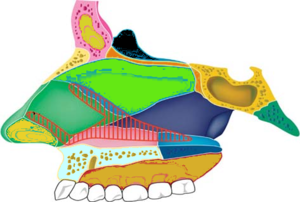Modified septoplasty
Introduction:
Septoplasty is the commonly performed surgical procedure these days. It has been evolving for more than a century. It was in the early part of 20th century Freer and Killian first reported this procedure. The technique developed by them involved removal of the complete nasal septum (SMR). It was left to Cottle to fine tune their procedure of submucosal resection of nasal septum. During initial stages due to fear of complications and constraints of illumination septal deviations involving the anterior and middle portions alone were corrected adequately. Posterior deviations were left unattended. With the advent of excellent equipments like the nasal endoscope the whole of the nasal septum can be visualised and this led to removal of excess septal cartilage leading to complications like septal perforation, flappy nasal mucosa and nasal deformities like saddle nose etc. Inspite of being nearly a century old procedure the concepts governing septal surgery has undergone very few modifications. Metzenbaum recognized the importance of caudal portion of nasal septum and was instrumental in devising the first principles of septoplasty. His swinging door technique is still being followed with minor modifications in the septoplasty procedure performed even now.
Modified septoplasty procedure:
Wang etal suggested certain modifications in the currently performed septoplasty procedures. These modifications were aimed at:
Ability to deal with all types of septal deviations
Preservation of cartilagenous support framework
Avoidance of complications
Before suggesting these modifications they conducted extensive studies on the biomechanics of septal deviation. In their study they identified three key stress lines in the nasal septum. These stress lines are:
At the junction between the caudal septal cartilage and the medial crus of the alar cartilage. This often causes anterior deviation.
Between the quadrangular cartilage and the perpendicular plate of ethmoid. This often leads to superior deviation.
Between the quadrangular cartilage and vomer bone, palatine process of maxilla and nasal crest of palatine bone. Deviations in this area leads to inferior deviation.
The reasons for these stress lines can be accounted if the theory of differential septal ossification is considered to be the cause for septal deviation.
